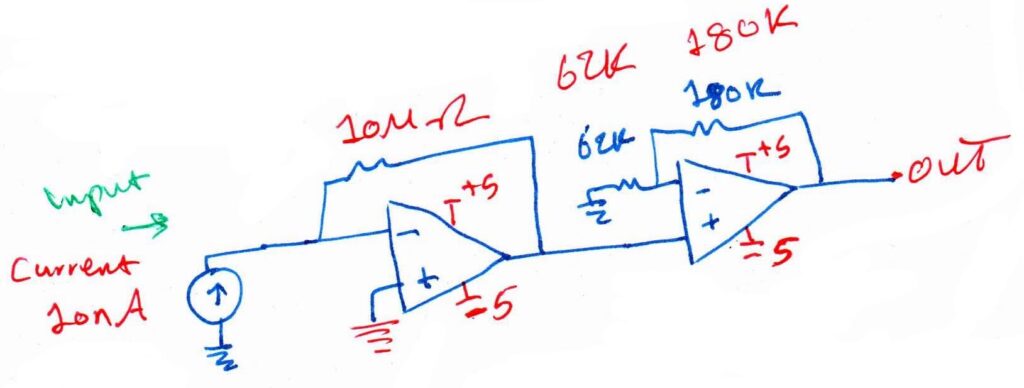Introduction
In industrial settings, the need for ultra-sensitive current measurement is paramount, especially when dealing with specialized sensors and low-level signals. This article delves into the intricate process of designing and manufacturing a precision nano and pico ammeter, highlighting key aspects such as signal conditioning, noise reduction, and calibration. The focus is on achieving high accuracy and reliability, crucial for industrial applications.

Key Design Considerations
1. Precision and Sensitivity
The primary objective in designing a nano and pico ammeter is to achieve exceptional sensitivity and precision. This requires meticulous selection of components, including low-noise operational amplifiers, precision resistors, and stable voltage references. The ammeter must accurately measure currents in the range of nanoamperes to picoamperes, often dealing with signals as low as a few femtoamperes.
2. Signal Conditioning
Signal conditioning is crucial for amplifying and filtering the tiny current signals to be accurately measured. The design incorporates a low-noise transimpedance amplifier (TIA) to convert the input current into a measurable voltage. This TIA is typically based on precision operational amplifiers, selected for their low offset voltage and low input bias current, minimizing errors in signal conversion.
The feedback resistor in the TIA plays a significant role in determining the sensitivity and bandwidth of the measurement system. High-quality resistors with low temperature coefficients are used to ensure stability and accuracy over a wide range of operating conditions.
3. Noise Reduction and Shielding
In low-current measurements, noise can significantly affect the accuracy of readings. The design includes comprehensive noise reduction techniques, such as the use of low-noise components, proper grounding, and shielding. The circuit board layout is optimized to minimize parasitic capacitance and inductance, which can introduce noise and instability.
Additionally, electromagnetic interference (EMI) shielding is implemented to protect the sensitive circuitry from external noise sources. This shielding is crucial in industrial environments where electrical noise can be pervasive.
4. Temperature Compensation
Temperature variations can affect the accuracy of current measurements. The design incorporates temperature compensation techniques to mitigate these effects. Components are selected for their low temperature drift characteristics, and, where necessary, temperature sensors are included to allow real-time compensation in the signal processing software.
5. Calibration and Testing
Calibration is a critical step in ensuring the accuracy of the ammeter. The nano and pico ammeter is calibrated using precision instruments such as the Keithley 6221 Series Source Meter and the 6482 Picoammeter. These devices provide accurate current sources for calibration across the entire measurement range.
The calibration process involves adjusting the system to account for any offsets and scaling errors, ensuring that the output accurately reflects the input current. Regular calibration is recommended to maintain the accuracy of the instrument over time.
Manufacturing Considerations
1. Component Selection and Sourcing
The manufacturing process begins with the careful selection and sourcing of high-quality components. Given the precision required, each component’s specifications are critically evaluated. Suppliers are chosen based on their ability to provide components with consistent quality and reliability.
2. PCB Design and Fabrication
The printed circuit board (PCB) design is a crucial aspect of the manufacturing process. The PCB layout is carefully designed to minimize noise and signal loss. Multi-layer boards with dedicated ground and power planes are used to enhance signal integrity. The fabrication process involves precise etching and assembly techniques to ensure that the final product meets the stringent requirements for precision measurement.
3. Assembly and Quality Control
During assembly, strict quality control measures are implemented to ensure that each unit meets the design specifications. Automated testing procedures are used to verify the functionality of the ammeter, including its response to known input currents and its stability over time. Any deviations from the expected performance are addressed through rework or adjustments.
Application in Industrial Settings
The precision nano and pico ammeter is invaluable in various industrial applications. It is particularly useful in monitoring the performance of sensitive electronic components, detecting leakage currents in insulation systems, and characterizing the behavior of specialized sensors. Its high sensitivity and accuracy make it an essential tool in research and development, quality assurance, and production testing.
Conclusion
Designing and manufacturing a precision nano and pico ammeter involves a deep understanding of analog electronics, signal conditioning, and noise reduction. The successful implementation of these elements results in an instrument capable of delivering accurate and reliable current measurements in challenging industrial environments. Through meticulous design, careful component selection, and rigorous testing, the nano and pico ammeter stands out as a crucial tool for precision measurement in various industrial applications.